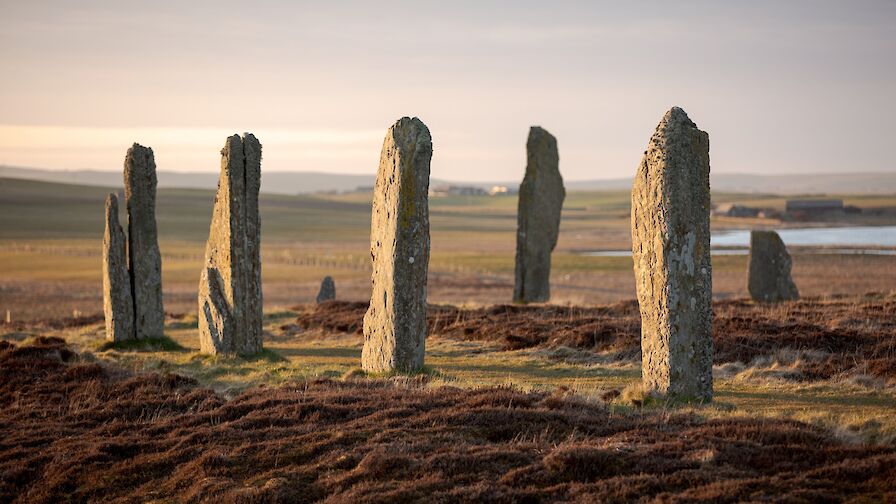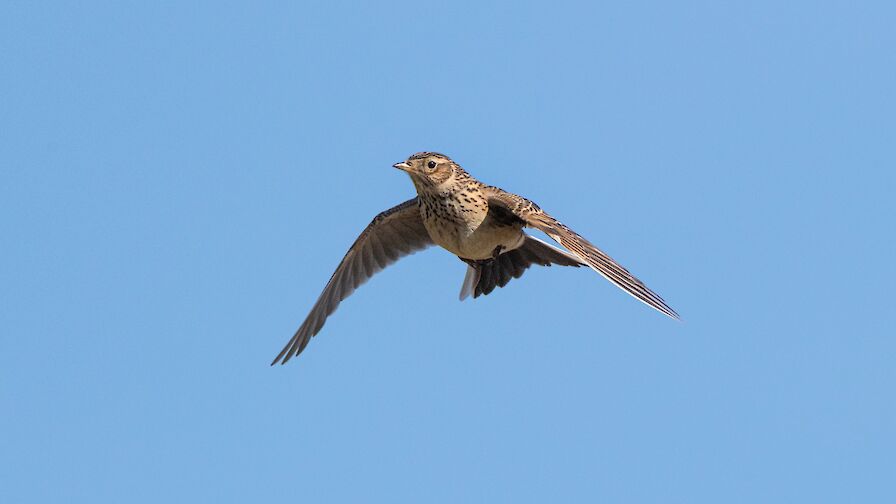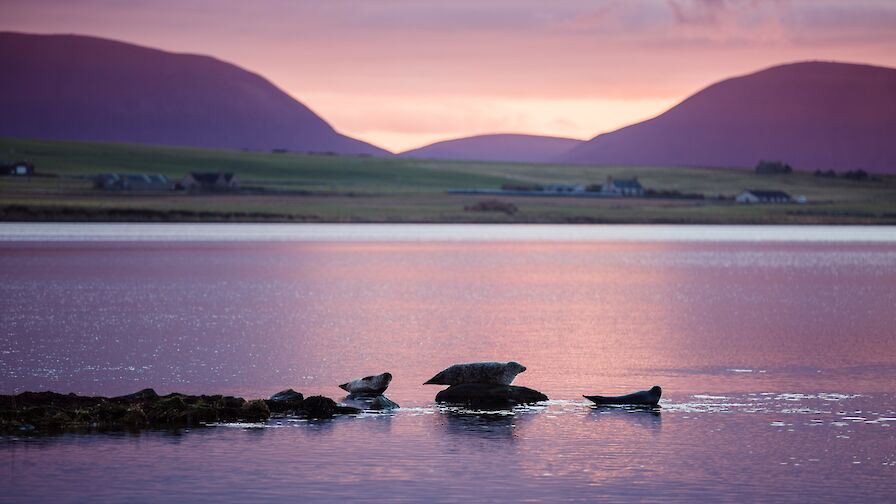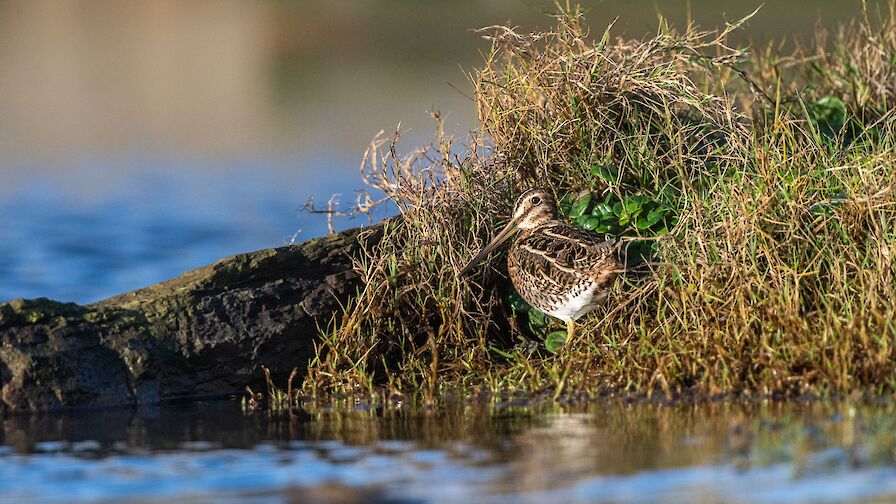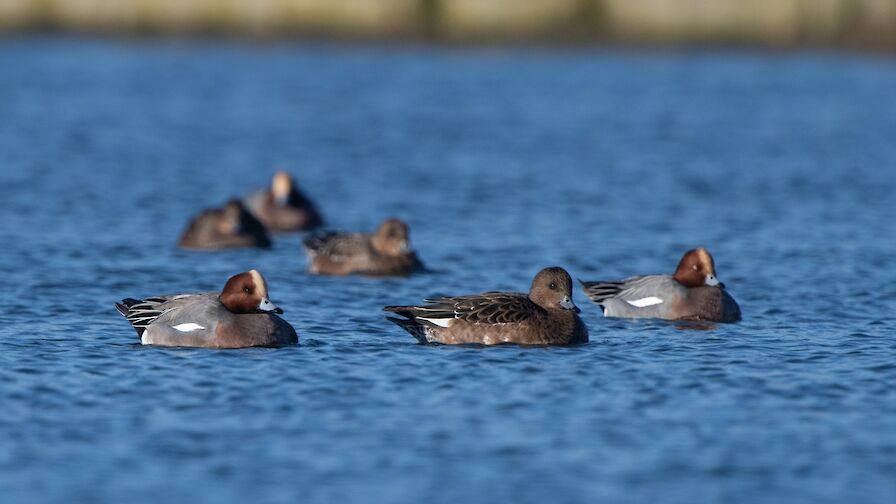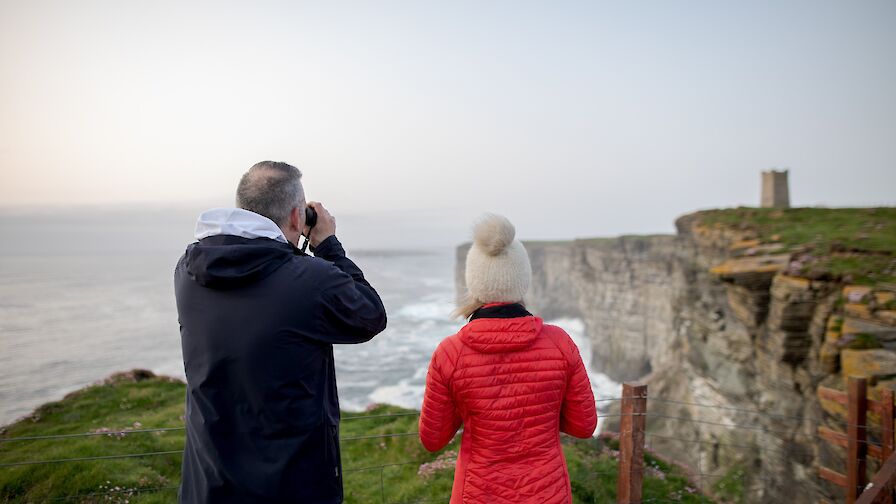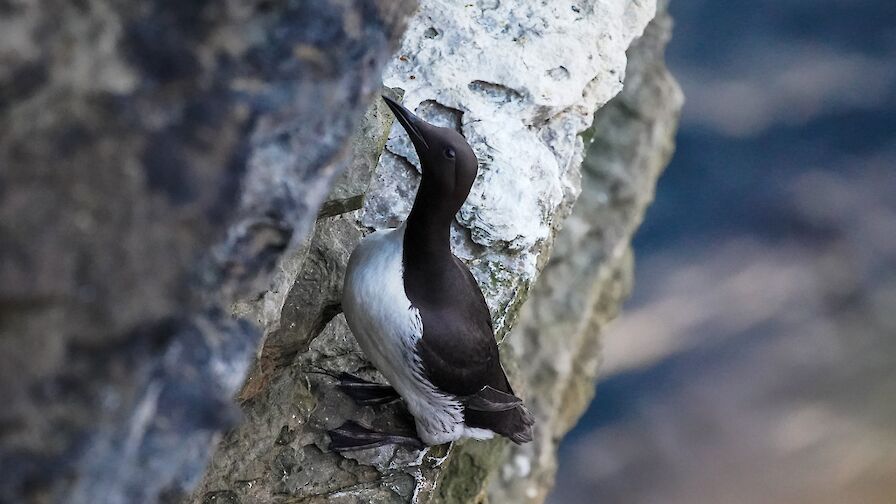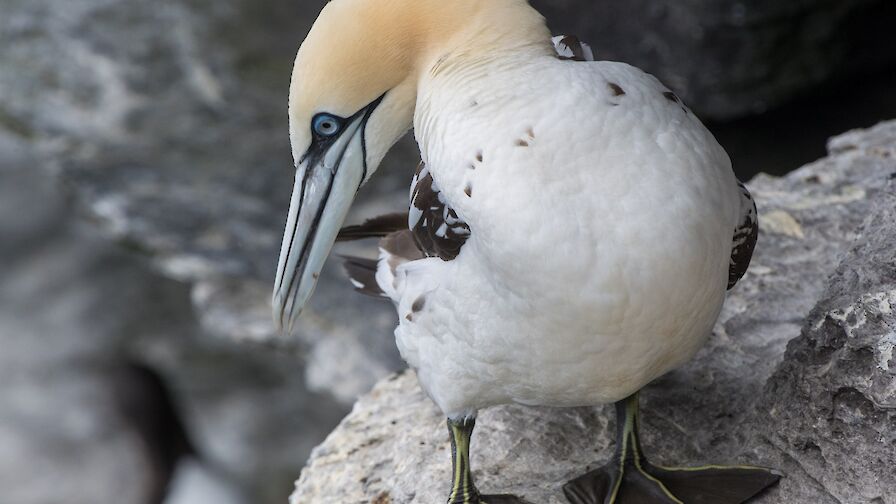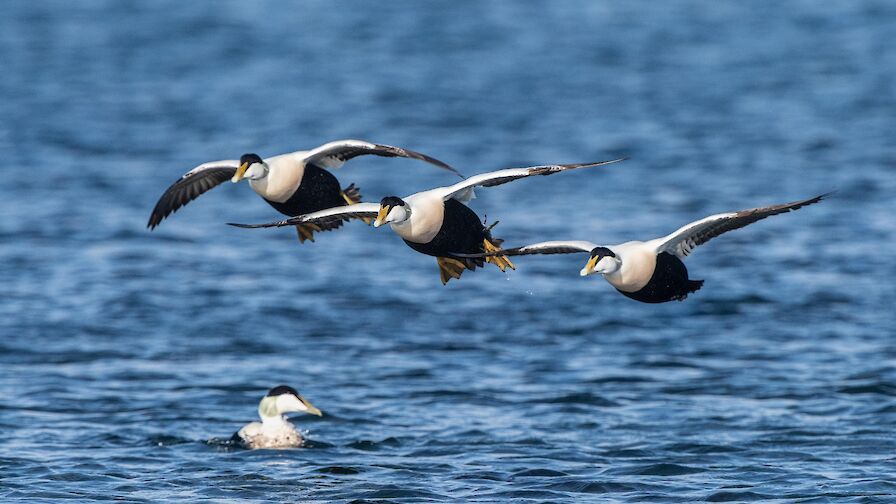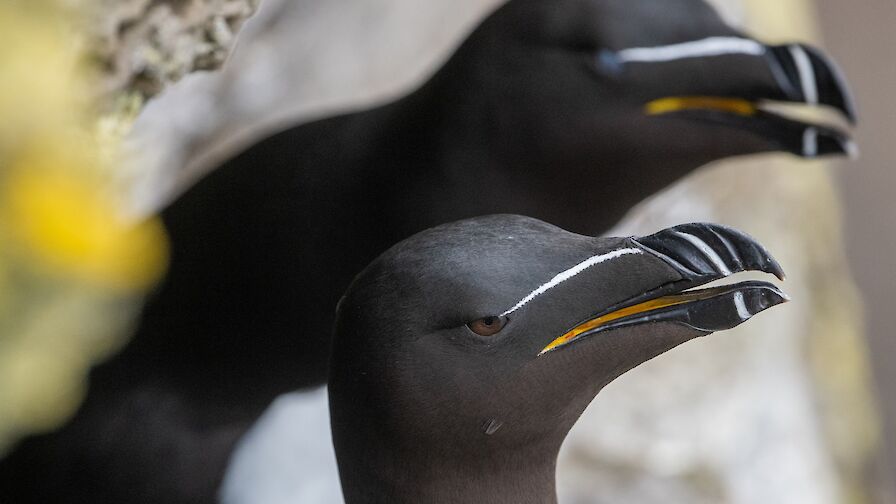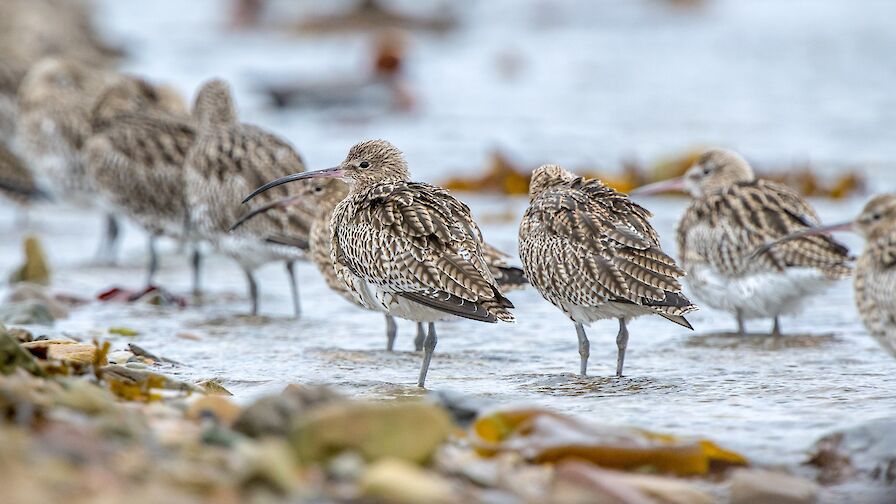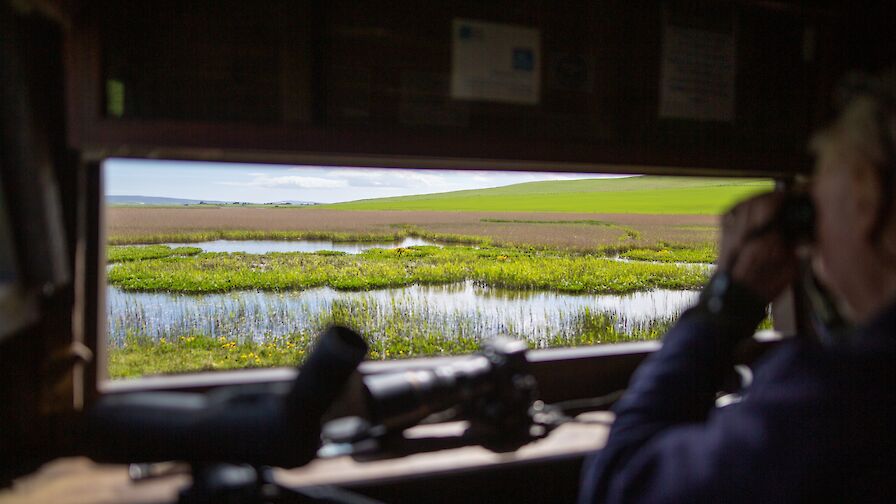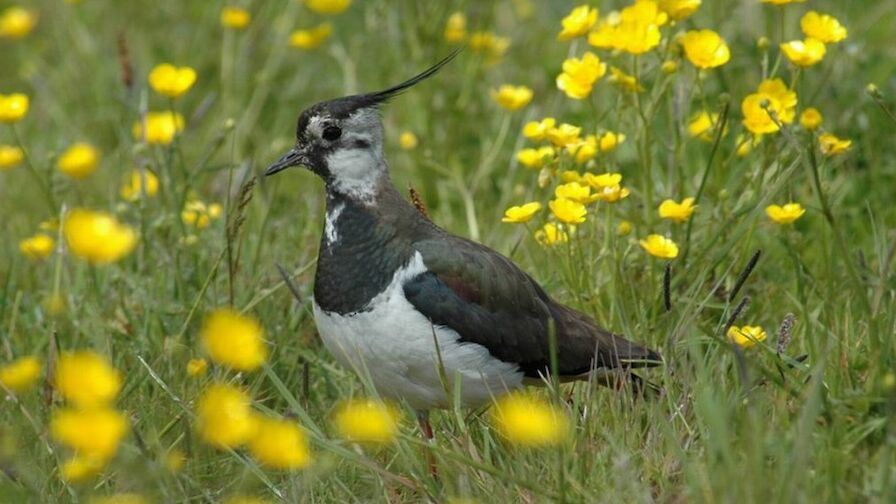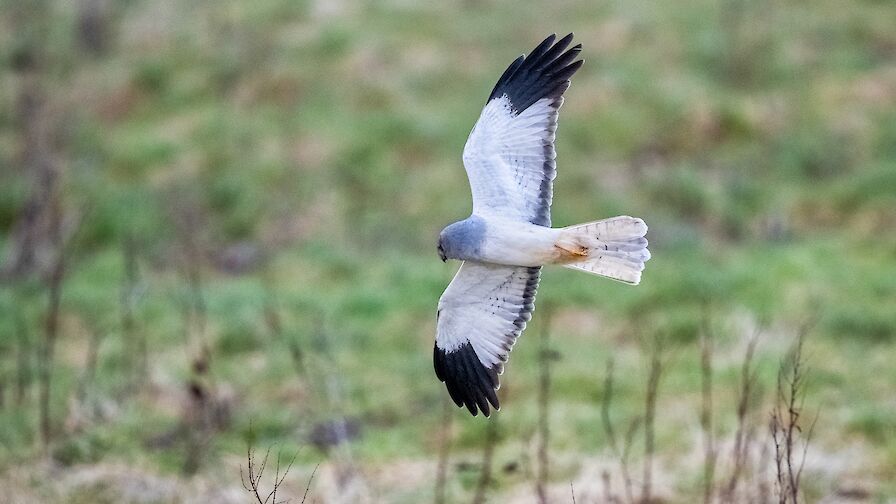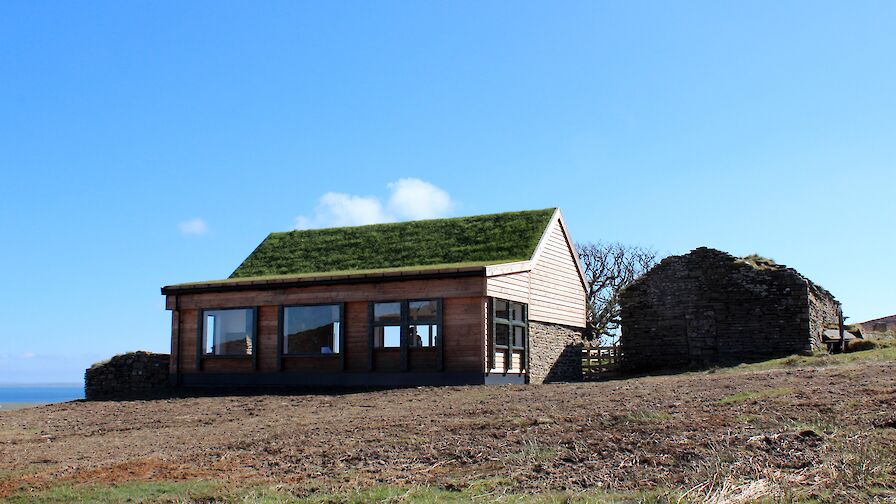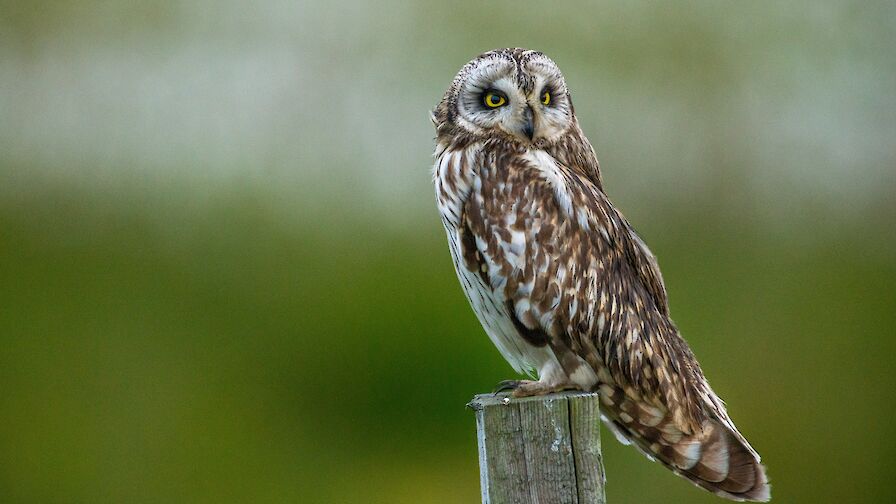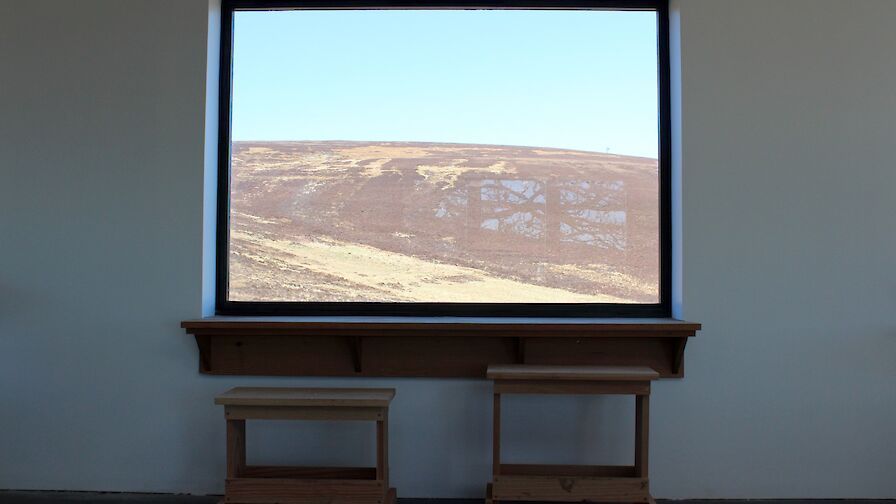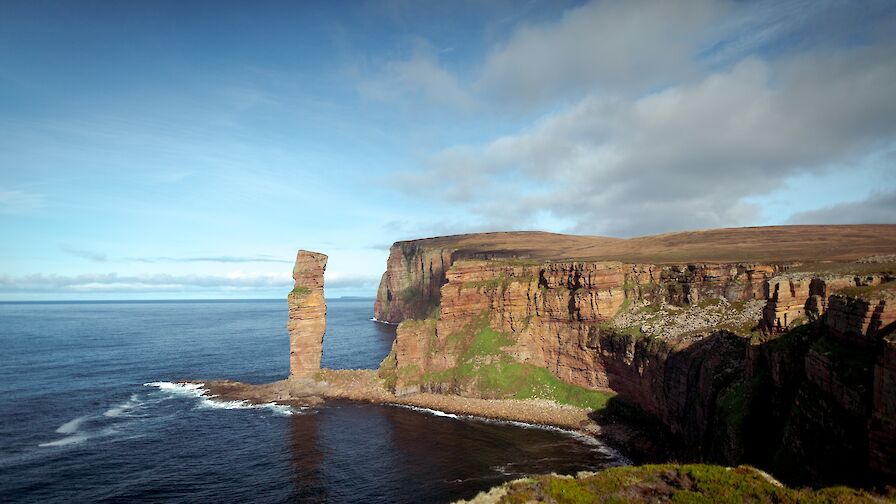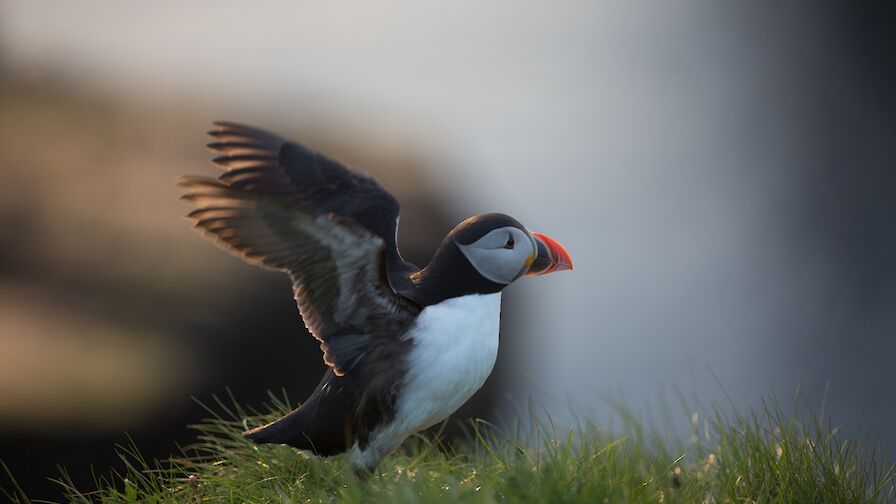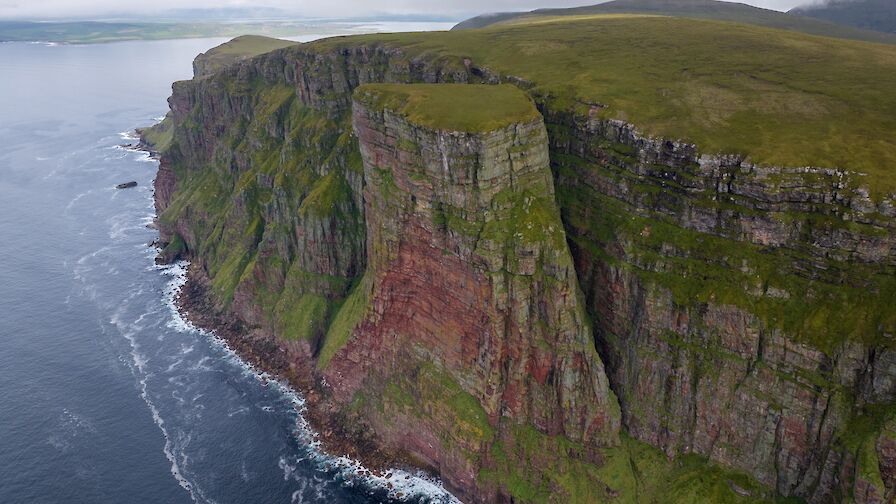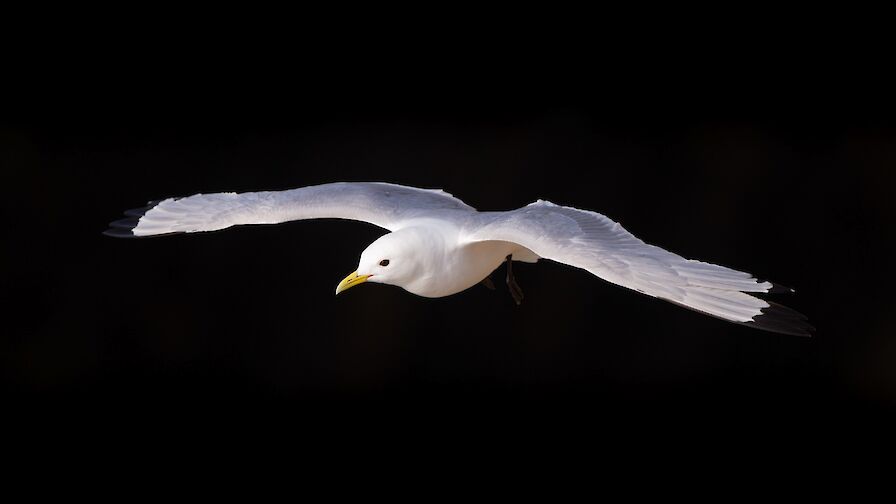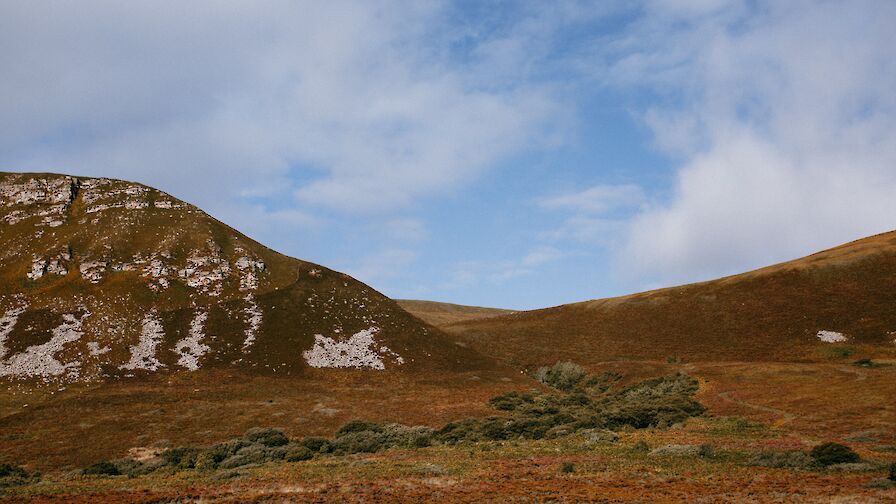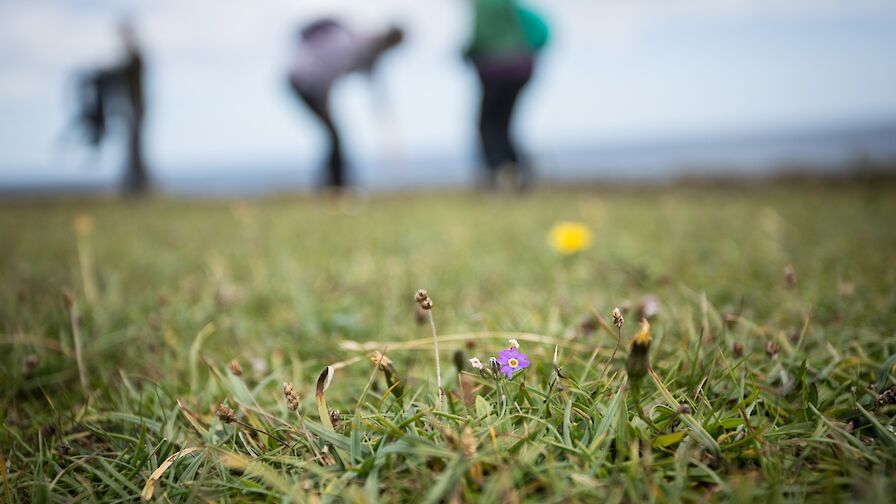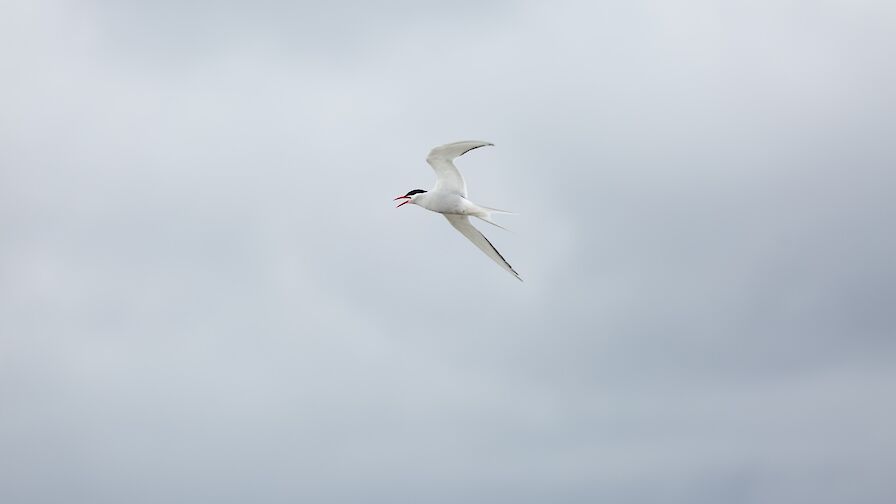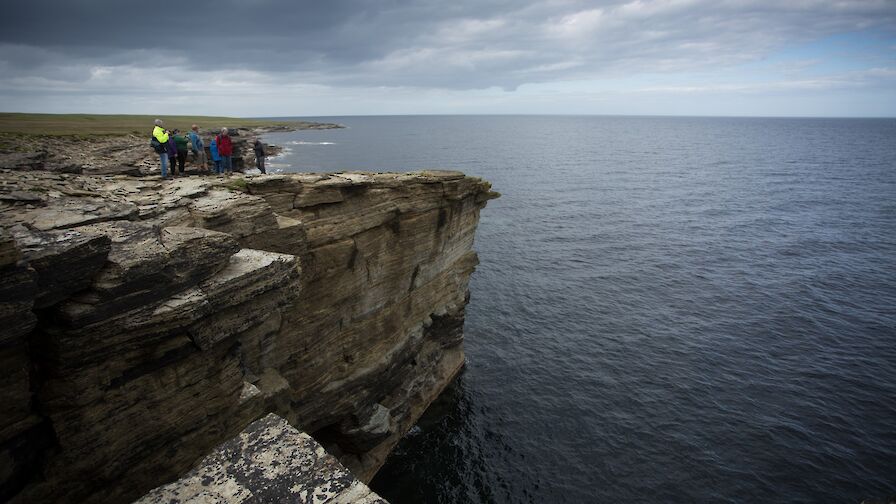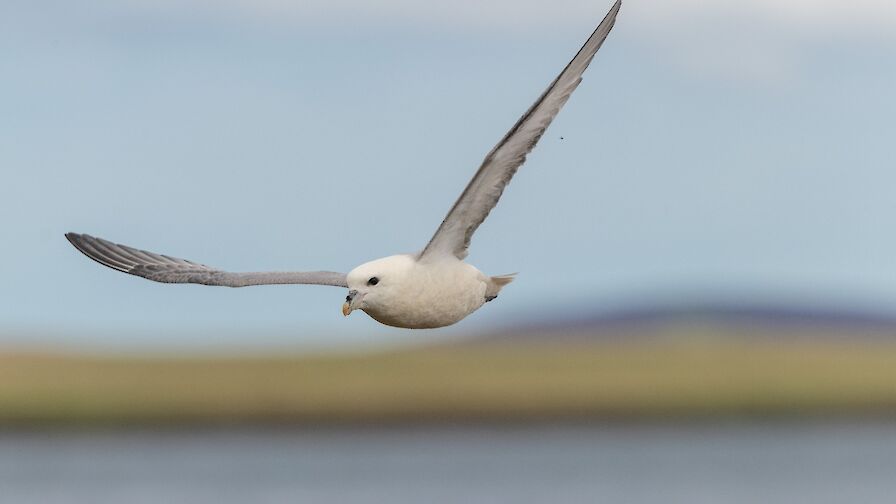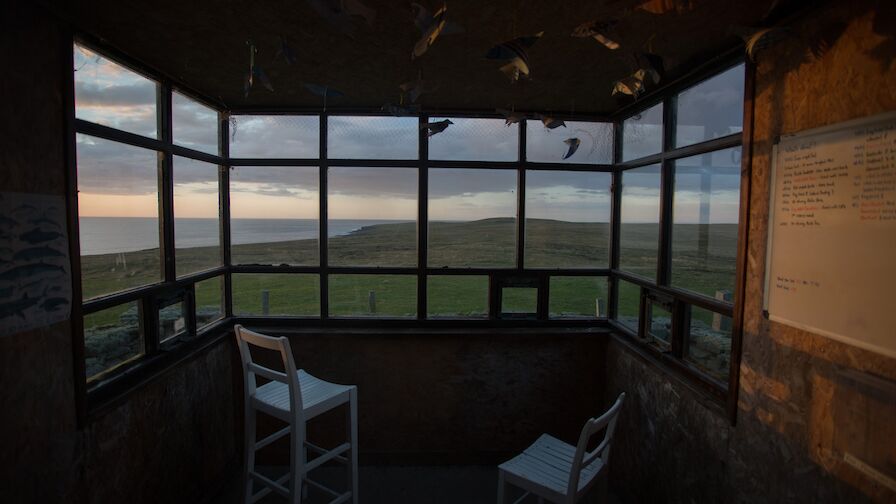Orkney is home to some of the rarest and most spectacular wildlife in the world.
With nearly 600 miles of coastline, dramatic clifftops, crystal-clear waters, lush meadows, wetlands and moorland, Orkney’s unique landscape is home to seabird cities, eagles, otters, puffins, seals, orcas and much more. The islands are alive with the sights, sounds and colours of nature in all seasons.
But spring marks the point when much of this nature comes alive.
Follow our spring wildlife trail to visit three islands, get up close with Orkney’s wildest inhabitants and uncover a natural paradise. View our map and find out more below.
1 - Brodgar; 2 - Marwick Head; 3 - The Loons; 4 - Cottascarth; 5 - Hoy; 6 - North Hill
Famous for its magnificent Neolithic stone circle, Brodgar is also a modern-day haven for wildlife.
Spring marks the start of the breeding season, as wading birds carry out their mating displays, producing a magical chorus of birdsong. Most notably, keep your ears open for curlew ‘bubbling’ and snipe ‘drumming’. The wet grasslands are also the ideal spot for wildfowl, such as wigeon and teal, to build their nests. Don’t forget to look to the skies too, as skylarks perform spectacular vertical displays to heights as high as 300m.
Brodgar is sandwiched between the lochs of Stenness and Harray. The salt water of the former is a perfect spot for watching seals, basking on the rocks just a few metres from the road. You might even catch a glimpse of an otter here too.
If you are visiting in March, it’s worth keeping your eye out for the last few goldeneye or long-tailed ducks too, before they begin their journey north for the breeding season. Back on land, you can see evidence of the phrase, “Mad as a March hare”, as these charismatic mammals can often be seen boxing on the grasslands: quite a sight when silhouetted against a spectacular sunset.
The best way to see the whole reserve is by following the trail that begins in the Ring of Brodgar car park (approx. 2km). This allows you to make your way to the Ring itself, before it brings you right down to the shore of the Loch of Stenness. Please keep to the trail whenever possible, to protect the wildlife that thrives just a few feet away.
Marwick Head is home to one of Orkney’s most magnificent seabird cities. After wintering out in the ocean, thousands of guillemots, razorbills and more return to these cliffs ahead of the breeding season. Look out for a splash of colour, which could very well be the clown-like beak or orange feet of a puffin. Fulmar soar gracefully between ledges, while gannets perform spectacular dives into the water.
Late spring offers the most impressive views, as the seabird numbers reach their peak. Atop these majestic cliffs, you can wander through carpets of thrift, sea campion and many more colourful flowers. Be careful not to stray too close to the edge though, for your own safety, as well as that of the wildlife.
Down at the water’s edge, a low-tide lagoon, known as the Choin, offers shelter for waders and wildfowl. Look for the colourful legs of redshank, and listen out for the distinctive call of eider ducks. Earlier in the spring, you may also spot Iceland and glaucous gulls, winter visitors whose white wing-tips stand out against our resident gulls.
The reserve is also a fantastic site for spotting cetaceans: bottlenose dolphins, minke whales and porpoises are all regularly seen from these shores. If you catch a break in the waves out of the corner of your eye, grab your binoculars as quickly as possible. It may even be an orca.
There are two car parks at Marwick Head, with a trail connecting the two (approx. 2.2km). Winding along the coast of the dramatic North Sea, sturdy footwear and warm clothing is recommended.
The Loons is a feast for the ears as much as the eyes. Sit yourself by the Listening Wall and immerse yourself in a symphony of birdsong. The unique shape of the wall is designed to amplify the sound of the breeding waders, including curlew and lapwing. Later in the season, keep your ears open for the wickering call of one of our rarest waders, the black-tailed godwit. Visit around sunrise to hear the spectacular dawn chorus.
A few hundred yards away, the Loons hide is the perfect place to see wildlife up close. Gadwall and shovelers are preparing for the breeding season, as are flocks of pintail that make up over 10% of the UK’s total. With so much on offer in the wetlands, don’t be surprised to see a hen harrier glide past too.
Ruff can sometimes be seeing passing over the reserve as they make their way to their breeding sites further north. Keep an eye out for males in their spectacular breeding plumage. With brightly-coloured feathers around their face and neck, they’re almost unrecognisable compared to their winter greys.
The hide at Cottascarth is named after Eddie Balfour, a local naturalist who conducted years of research into hen harriers in Orkney. It comes as no surprise then, that this reserve is one of the best places in the country for viewing these majestic birds of prey.
Spring sees the males take part in their spectacular courting displays, affectionately known as ‘skydancing’. With an elegant combination of dips, twists and rolls, they can draw our eyes as easily as those of a female.
Follow the track from the car park to the hide (approx. 600m) for the best chance of seeing hen harriers, along with other birds of prey such as merlin and short-eared owls. Visit in the morning or evening for your best chance of seeing skydancing.
There is plenty of other wildlife to enjoy on your walk too. Keep your eye out for ravens and stonechat, and your ears open for the unmistakable call of a cuckoo. Moreover, the track provides a perfect vantage point to look over Rendall Moss, home to one of the densest populations of breeding curlew in Europe.
A striking back-drop to many views in Orkney, the high hills, sweeping moors and beautiful beaches of Hoy make it one of Orkney’s most spectacular destinations. Add in the UK’s northernmost native woodland, and its highest vertical sea cliff, and you have a nature reserve that has a bit of everything.
The cliffs at St John’s Head and the spectacular sea stack, the Old Man of Hoy, welcome thousands of seabirds from May onwards. Puffins build their burrows into the Old Man itself, while great skuas patrol the skies. Keep watching and you might see one harrying an unfortunate kittiwake, hoping to steal its next meal. The cliffs are normally most active around sunset, when the parents-to-be return from a hard day of fishing.
Away from the sea, Orkney’s two highest peaks offer moorland which is decorated with a stunning array of flowers, including primroses and clovers. The post road between the hills is an excellent way to see the reserve (approx. 4km), passing close to Berriedale Wood and Sandy Loch. Please dress appropriately, as the trail is rough in places.
High on the cliffs above the Dwarfie Stone, white-tailed eagles have arrived in recent years after an absence of over a century, and golden eagles have been spotted in Hoy too. The best place to spot them is from the Dwarfie Stone car park, between Linksness and Rackwick.
At first glance,Papa Westray’s North Hill reserve strikes you with its crashing waves and howling winds. However, hidden amongst this wild landscape is one of Orkney’s most delicate natural treasures.
Primula Scotica can only be found in a select few spots around Orkney and the north coast of Scotland. With its purple flower less than 1cm in diameter, you may need to get on your hands and knees to see it properly. Look around the cliffs at Fowl Craig from mid-May.
May also sees the arrival of Arctic terns, having completed their epic, 60,000-mile migration. Despite numbers dwindling in recent years, the reserve is still one of the best places in the UK to view them. Speaking of seabirds, spring sees skuas claim their nesting sites, while razorbills and guillemots settle onto the cliffs. On a breezy day, the high winds are perfect for watching the elegant flight of fulmar.
Down on the water, the rocky outcrops are perfect for shags and guillemots. Watch for their characteristic pose, standing with their wings wide to dry them in the wind. There are two walks that lead you round the reserve: Fowl Craig nature trail (2.5km) and the Coastal Trail (6km). Both are on rough track, but if you’d like something more sedate, the North Hill hide is approximately 200m from the reserve entrance and offers spectacular views over Orkney’s finest maritime heath.
Find out more about Orkney in spring, and discover Orkney's nature and wildlife highlights.
